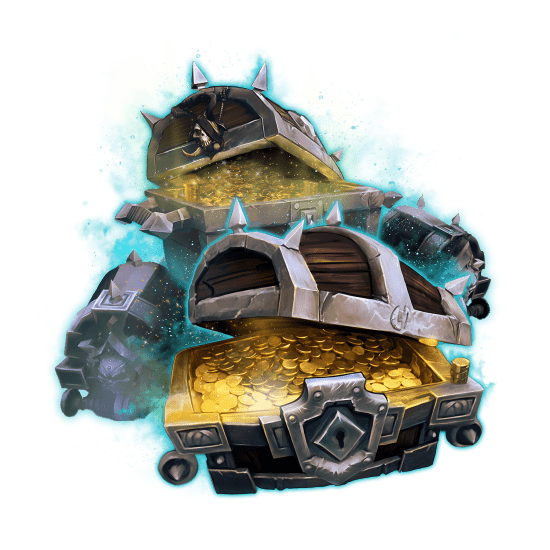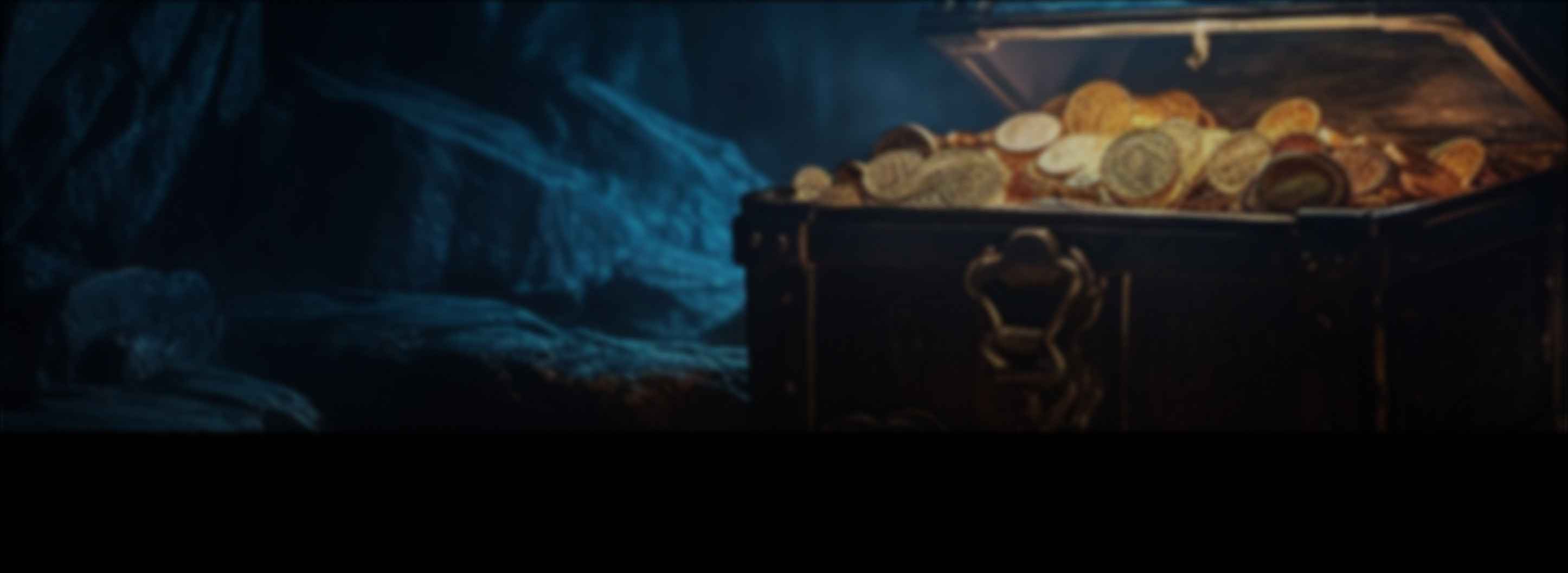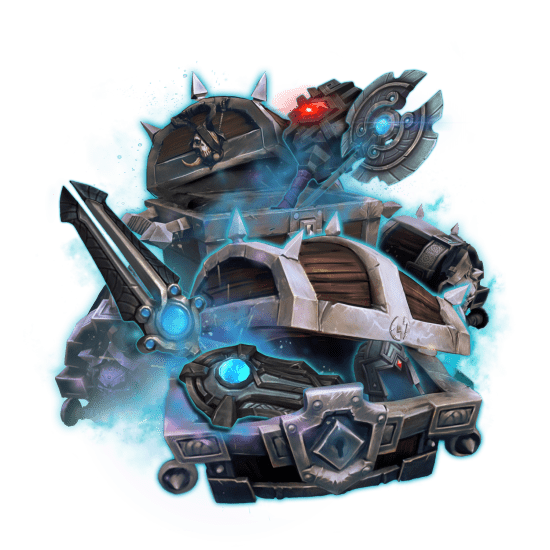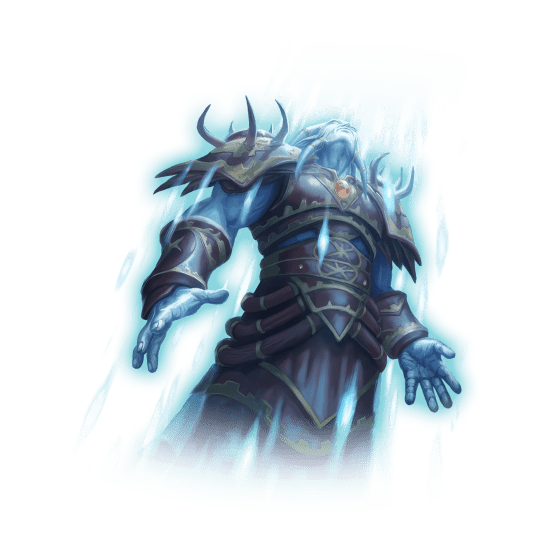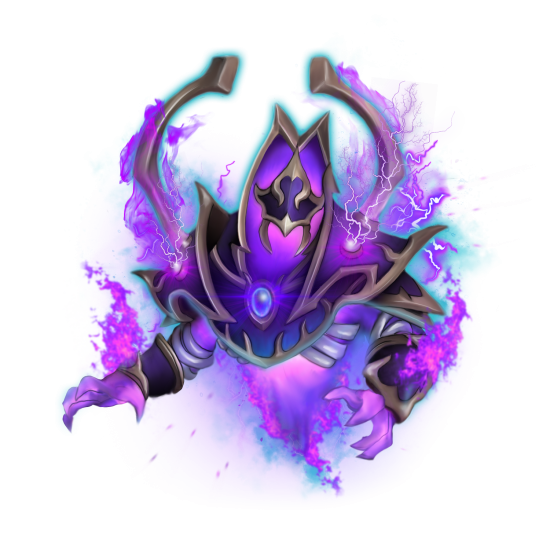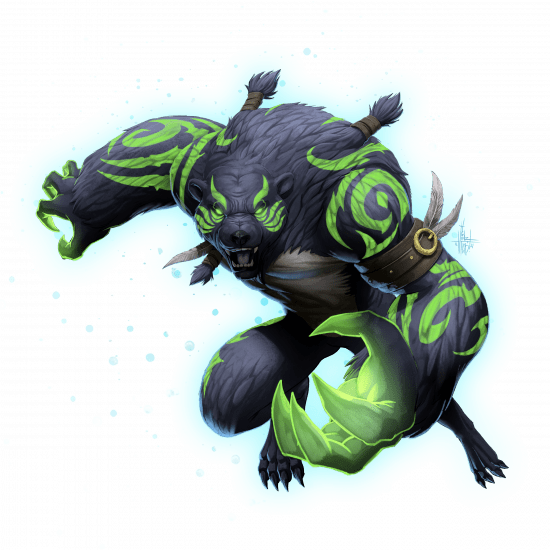The world of Azeroth is cruel, and the only morality in a cruel world is chance. In this Fatebound Rogue guide, we’ll explore the newly revealed hero talent tree for the Rogue class called Fatebound. Hero Talent Trees, if you don’t know it yet, are one of the biggest new features of The War Within. They’re not new specializations, but they do offer completely new talents and a new class mechanic that is always inspired by certain parts of the class’ lore.
In the case of WoW The War Within Fatebound Rogue, this talent tree offers a coin-flipping mechanic. We’ll explain how this mechanic works later on. The talent tree itself is available for only two specs – Assassination and Outlaw. So, if you want to try it out, you can’t do it with the Subtlety spec. The tree itself consists of 11 talents, with the Keystone being the first and main talent that adds the coin mechanic, and the 11th talent is the Capstone, which gives the coin sort of an ultimate upgrade. If that doesn’t really make sense yet, don’t worry; we’ll explain the talent tree further.
This WoW Fatebound Rogue guide will cover more than just the talent tree. We’ll also give you a quick rundown of how to utilize this talent tree in combat, give you ideas for your new ability rotation, provide tips for leveling, and much more. So, get comfy, and let’s get started!
IMPORTANT NOTE: Apart from learning everything about Fatebound Rogue, you can also Buy WoW Boost from Skycoach. We offer a wide range of products at the lowest market price and with the fastest delivery. You can make your first purchase even CHEAPER if you find a special PROMO CODE (highlighted in green) hidden in this article and get a 20% DISCOUNT.
Fatebound Rogue Talents
The Fatebound hero talent tree becomes available once you hit level 71. At that level, you can activate your first talent, which would be the Keystone. At every next level all the way up to 80, you’re going to be able to unlock one more of WoW Fatebound Rogue talents.
The concept behind the Keystone talent called Hand of Fate revolves around a coin toss in which, depending on the result – Head or Tails, you’d get a different kind of bonus. This design aims to make the Rogue’s gameplay more dynamic because you’re going to have to adapt your rotation after each coin toss. It is no longer going to be a mindless repetition of the same abilities in the same order. So, let’s explore all of the talents and see what each of them does:
| Row | Talent Name | Description |
| K | Hand of Fate | When you pull off a big move that uses up 5 or more combo points, flip a Fatebound Coin. If it lands on Heads, your attacks pack an extra 5% punch until you get Tails. But if it's Tails, your target gets hit with some Cosmic damage. Plus, each time you get the same result as your last flip, the effects get even stronger, upping by 20%. |
| 1 | Chosen's Revelry | Leech goes up by 0.5% for each time your Fatebound Coin flips the same face. |
| 1 | Tempted Fate | You might soak up 10% of any damage, with a chance equal to your critical strike chance, maxing out at 40%. |
| 1 | Mean Streak | If Envenom keeps flipping Fatebound Coins in a row, they're 33% more likely to match the last flip. |
| 1 | Inexorable March [NYI] | Keep a streak of at least 2 matching flips, and you won't slow below 70% speed. |
| 1 | Death's Arrival [NYI] | Grappling Hook's ready for a second swing within 3 seconds, no waiting. |
| 2 | Deal Fate | Sinister Strike gets you an extra combo point when it hits again. |
| 2 | Edge Case | When you use Deathmark, your next Fatebound Coin flip lands on its edge, counting as both Heads and Tails. |
| 2 | Fate Intertwined | Envenom's crits spread 15% of their damage as Cosmic to two more foes nearby. If there aren't any extras, it duplicates 15% to the main target. |
| 3 | Delivered Doom | When Blade Flurry's on the shelf, damage from Tails gets a 35% boost. |
| 3 | Inevitability [NYI] | Cold Blood amps up the next 2 Dispatches, making sure their Fatebound Coins match the last flip. |
| 3 | Destiny Defined | Sinister Strike's got a 5% better chance to strike again, and your Fatebound Coins get a 5% extra shot at matching the last flip. |
| 3 | Double Jeopardy | Right after you pop out of Stealth, your first Fatebound Coin flip tosses two coins that match. |
| C | Fateful Ending | Hit the same face on your Fatebound Coin seven times in a row, and you get a 1% buff to all your stats until you take a breather for 10 seconds. |
The NYI in the table stands for “Not Yet Implemented,” which means that at the time of writing this guide, these BLOG20 talents were not in the game yet. Anyway, after revealing the list, let’s answer the question of what are Fatebound Rogue talents one more time. These talents improve or alternate the effects of the Fatebound Coint, making it more viable the more you use it in combat. When going through this tree, you’re going to have to make some choices along the way. Some talent nodes have two talent choices, and you must pick one. But don’t worry, in the next part, we’re going to pick the best talents together.
Best Fatebound Rogue Talents
Choosing the best Fatebound Rogue talents can be pretty difficult because you’re going to want to test them out first and see which one works best with your build. Still, you can kind of determine the best talents just by analyzing this hero talent tree.
- Mean Streak: Enhancing the likelihood of Envenom flips matching the last flip by 33% incentivizes maintaining a streak of Fatebound Coin results, potentially leading to significant damage boosts over time.
- Deal Fate: Granting an additional combo point when Sinister Strike hits again improves resource generation, facilitating smoother rotation execution and enabling more frequent use of finishers.
- Delivered Doom: Providing a 35% damage boost to Tails while Blade Flurry is inactive amplifies burst damage potential, making it an excellent choice for situations requiring high single-target damage.
Together, these talents offer a well-rounded toolkit that addresses both sustained and burst damage needs, making them an effective combination for maximizing the Fatebound Rogue's effectiveness in combat.
How to Play Fatebound Rogue
In the Fatebound Rogue how to play section, we’ll discuss how your gameplay will change after taking on this new hero talent tree.
As the Fatebound Rouge, you flip a coin once you’ve built up enough combo points. The flip happens automatically, and you don’t have to press anything. You’ll see an animation of a coin being flipped, and as it lands on the ground, you’ll see the crossed swords for tails or the skull for heads. Each flip offers a choice: either boost your attacks or deal extra Cosmic damage to your target. The bonus applies passively, improving your following attacks.
Not trying to start a Fatebound Rogue DPS guide or anything, but what’s cool about it is that if you get the same result several times in a row, your bonuses will stack. The exact amount of stacking and what happens when you do depends on what kind of talents you decide to unlock. The Capstone talent gives you a +1 to all of your stats (and we mean all) if you’re lucky enough to get the same result seven times in a row. The effect will sadly end when you exit the combat. And that, in essence, is how you play as the Fatebound Rogue. You just get the coin toss result and then act on it depending on what kind of bonus you got.
Fatebound Rogue Leveling
The WoW Fatebound Rogue leveling is not much different from your regular rogue leveling. Since the Fatebound talent tree unlocks at level 71, up to level 70, you level up your Assassins or Outlaws the same way you always did. Generally speaking, your leveling experience will look something like this: BLOG20
- Levels 1-70 (Traditional Rogue Training):
- Begin your journey as a budding rogue, mastering stealth, precision strikes, and evasion tactics.
- Unlock core abilities and talents from the rogue talent tree, such as Sinister Strike and Stealth.
- Progress through quests, dungeons, and encounters to gain experience and refine your rogue skills.
- Experiment with different talent builds within your chosen specialization to optimize your playstyle.
- Level 71 (Unlocking the Fatebound Talent Tree):
- Reach level 71 and unlock the Fatebound talent tree, introducing talents specific to mastering Fatebound Coin flips and abilities.
- Gain access to new talents and mechanics centered around manipulating Fatebound Coins to enhance combat effectiveness.
- Begin allocating talent points into the Fatebound tree, choosing talents that complement your rogue specialization.
- Levels 72-80 (Mastering Fatebound Techniques):
- Delve deeper into the Fatebound talent tree, unlocking potent abilities and synergies for manipulating Fatebound Coins.
- Experiment with different talent combinations to optimize Fatebound gameplay for various situations.
- Refine mastery of Fatebound techniques, strategically triggering and managing Fatebound Coin flips in combat.
- Adapt talent choices based on challenges faced, ensuring readiness for quests, dungeons, raids, or PvP encounters in the War Within.
So, there’s no need for the WoW Fatebound Rogue leveling guide because it's the same old Rogue, and the leveling process will not change. The additional 10 levels added in the War Within are what matter anyway, so until then, you just do whatever you did before to get to the next level. Once at level 71, don’t forget to unlock the next hero talent, and you’ll be golden.
Fatebound Rogue Rotation
Obviously, you’re going to have to reinvent your WoW Fatebound Rogue rotation that utilizes the new coin-flipping mechanic. Here’s what that would look like:
1. Opener:
- Begin in Stealth if possible.
- Apply any necessary buffs or poisons.
- Initiate combat with Garrote or Cheap Shot for Assassination, or Ambush or Cheap Shot for Outlaw.
- Use Sinister Strike or Backstab to generate combo points.
2. Fatebound Activation:
- Use a finishing move that consumes 5 or more combo points to trigger a Fatebound Coin flip.
3. Fatebound Outcome:
- If the flip lands on Heads:
- Prioritize abilities that benefit from increased damage, such as Eviscerate or Dispatch.
- If the flip lands on Tails:
- Utilize abilities that deal additional Cosmic damage, such as Nightblade or Pistol Shot (with Loaded Dice talent for Outlaw).
4. Consistent Flips:
- Aim to maintain a streak of consecutive flips to increase the potency of Fatebound effects.
- Utilize talents like "Mean Streak" to boost the likelihood of matching consecutive outcomes.
5. Cooldown Management:
- Incorporate cooldown abilities such as Vendetta (Assassination) or Adrenaline Rush (Outlaw) into the rotation as needed.
- Ensure that these abilities are used during favorable Fatebound outcomes to maximize their effectiveness.
6. Adaptation:
- Adjust the rotation based on encounter mechanics, such as switching targets or prioritizing survival cooldowns if necessary.
- Experiment with different talent combinations to optimize damage output and adaptability in various scenarios.
7. Resource Management:
- Maintain energy levels to ensure consistent ability usage.
- Utilize abilities like Roll the Bones (Outlaw) or Crimson Tempest (Assassination) to manage combo points efficiently.
8. Finisher Priority:
- Prioritize finishing moves based on the current Fatebound outcome and the remaining health of the target.
- Aim to use high-damage finishers during favorable Fatebound outcomes to maximize damage potential.
While this might not be the best Fatebound Rogue rotation guide for your specific Rogue build, this should serve as a good guideline for how you should approach dealing with enemies and using the full extent of your arsenal.
Conclusion
The WoW Fatebound Rogue 11.1 talent tree adds a great deal of randomness to players' choices and, eventually, their damage outcome. While both sides of the coin are beneficial and increase damage in one way or another, predicting and playing to the strength of each coin toss can be tiresome as you build up your combo points.
It is a nonetheless unique mechanic that actually adds a bit of excitement to the gameplay. However, when rogues play one of the core DPS roles in endgame content, the consistency of their DPS is what is expected. We can only wonder how Fatebound Rogues will fare in raids and Mythic plus dungeons. Still, this is a cool mechanic, and it can be fun to use, at least during the leveling phase or farming.
F.A.Q.
What are the best Fatebound Rogue talents?
The best Fatebound talents are:
- Row 1: Mean Streak
- Row 2: Deal Fate
- Row 3: Delivered Doom
Is Fatebound Rogue good?
The Fatebound Rogue’s main feature is tossing a coin, which gives him different bonuses. While it is a dynamic new way to combat, whether this is going to be an overall improvement to the class is difficult to say.
Is Fatebound Rogue hard to play in WoW?
The difficulty of playing Fatebound Rogues comes from the random results provided by the coin toss. If you can play around that, then the class is not hard.
How do I maximize DPS Fatebound Rogue?
To maximize DPS, try to get the same coin side several times in a row, there are multiple benefits to getting the same result, and all of them increase damage.
Which spec is best for Fatebound Rogue?
You can either choose the Assassin or Outlaw. Actually, each spec benefits from the Fatebound talent tree in its own way, so it's really up to your preference.
Is Fatebound Rogue good for fast leveling in WoW?
With the insane damage burst potential that comes from the Fatebound talents, leveling through the last 10 levels should be a breeze once you figure out the most optimal rotation.
What is the best Fatebound Rogue rotation in WoW?
- Here’s an example of a good Fatebound Rogue rotation:
- Open with Garrote or Cheap Shot from Stealth.
- Generate combo points with Sinister Strike or Backstab.
- Trigger a Fatebound Coin flip with a finishing move.
- If Heads, prioritize high-damage abilities like Eviscerate or Dispatch. If Tails, use abilities dealing Cosmic damage.
- Aim for consecutive flips to strengthen Fatebound effects.
- Incorporate cooldowns like Vendetta or Adrenaline Rush during favorable outcomes.
Is Fatebound Rogue good for PvE?
Yes, Fatebound Rogue can excel in PvE content due to its ability to enhance damage and survivability through Fatebound mechanics, making it a valuable addition to raid and dungeon compositions.


